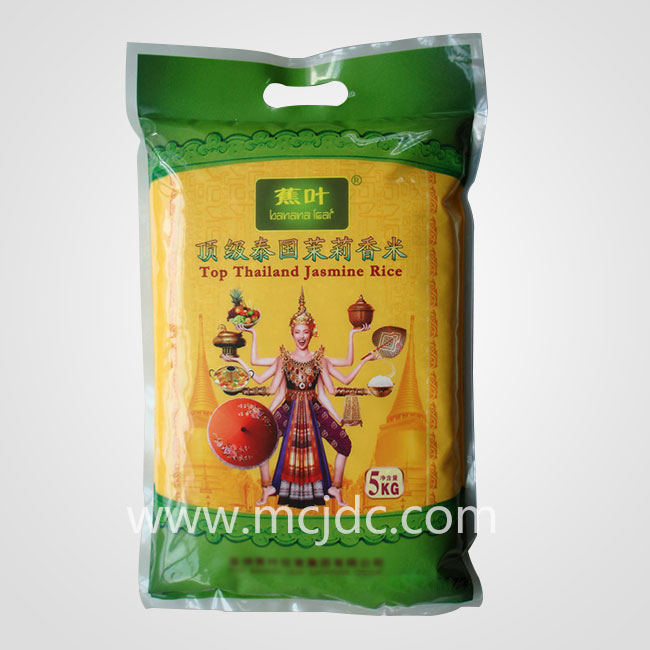Rice is the staple food we eat most, which is praised as "the first of five grains". Usually go to the supermarket to buy bagged rice, we are based on which to identify the quality of rice? In the face of a wide range of rice, perhaps most people will choose the rice with high price first, and think that the price is directly proportional to the quality, so it's right to take the expensive one. In fact, the more expensive the rice, the better. As long as there is this line on the rice bag, no matter what brand is good rice.
When buying rice in bags, you need to look at the executive standard number: after you select a suitable rice variety, you need to look at the label of the rice bag. Here is a collection of information about the place of production, grade and shelf life of the rice. The most important thing is to look at whether there is a national executive standard number. This series of numbers is very important. At present, the national standard for rice is GB / t1354-2018. As long as the standard number is printed on the label, it means that the quality and hygiene of the rice meet the national requirements. In other words, the executive standard: GB / t1354 is in line with the national standard of ordinary rice, as long as there is this line on the rice bag, you can rest assured to buy.
Even if the brand is small and the price is cheap, it is good rice. If the executive standard on the rice bag is any of the above, it is high-quality good rice, and the price will be higher than the price of ordinary rice in the "executive standard: GB / t1354". In addition, there is a quality level in the label. Rice is usually divided into four grades: first class, second class, third class and fourth class. The price difference of rice mainly lies in its grade. Generally speaking, every level of rice processing is equal to one or two more layers of rice skin. Because the closer the rice is to the outer layer, the worse the taste, the finer the rice processing, the better the taste, and the corresponding price will be higher.
Grade of rice, grade I rice: back groove without skin, or skin does not line, rice germ and grain skin layer to clean accounted for more than 90%. Because the first grade rice basically removes the brown rice's cortex and aleurone layer, the content of crude fiber and ash is very low. Therefore, the rice has high swelling property, high rice yield and good eating quality. Second grade rice: there is skin in the back groove, and more than 85% of the rice germ and grain husk are removed. The processing precision was lower than that of the first grade rice, and the edible quality, rice yield and digestibility were slightly lower than that of the first grade rice.
Third grade rice: there is skin in the back groove, more than 80% of which have no more than one fifth of the grain skin. The content of ash and crude fiber in rice was higher, and the rice yield and digestibility were lower than those of first grade rice and second grade rice. Grade 4 rice: there is skin in the back groove, and 75% of the rice with no more than one third of the grain skin residue. Because there are a lot of cortex and aleurone layer in rice, the crude fiber and ash content in rice increase. Although the rice yield is not as high as other grades of rice, it contains a lot of cellulose, which is beneficial to human physiological function.
When we buy rice, we also look at the packaging grade by the way. Only when we have a clear idea can we buy rice at ease. Every time the rice bowl bottoms out and you go to the supermarket to buy rice, you always worry about buying old rice or renovated rice, so if you want to eat new rice, you still need to identify it. How to distinguish new rice from old rice? A key news, new rice: there is a unique fragrance of rice. Chen Mi: it only tastes like rice bran. Some of the processed reconditioned old rice, sealed with bags for about half an hour and then opened, will smell obvious mildew. Second, new rice: full surface particles, transparent color, uniform luster, rice head (Germ) is milky white or light yellow, milky white dots are obvious. Aged rice: the grains are broken, beige, gray or yellowish, lusterless and opaque. If the surface of the rice grain is gray powder or has white groove, it is aged rice, and the more white groove and gray powder, the longer the time. In addition, if there are insect eaten grains and insect corpses, it also means that they are Chen rice. Three to bite, new rice: the new rice in the mouth bite, will feel the hardness of rice is high, not easy to bite.
Chen Mi: a bite will be broken, and it is powdery slag. Fourth, pinch, new rice: new rice has more water than old rice. If you hold it in your hand and pinch it hard, you will feel that it is sticky and smooth. It is not easy to leave residue in your hand after pinching. Chen Mi: it's very loose in the hand. Some renovated Chen Mi will be broken as soon as they are kneaded, leaving a lot of white residue. If you use mineral oil, paraffin and other polished rice, it will feel very greasy and sticky. The above methods can be used when buying rice. You can collect it first, and then go to buy rice. If you don't know which one to choose, you can have a look.



 You are here:
You are here:





